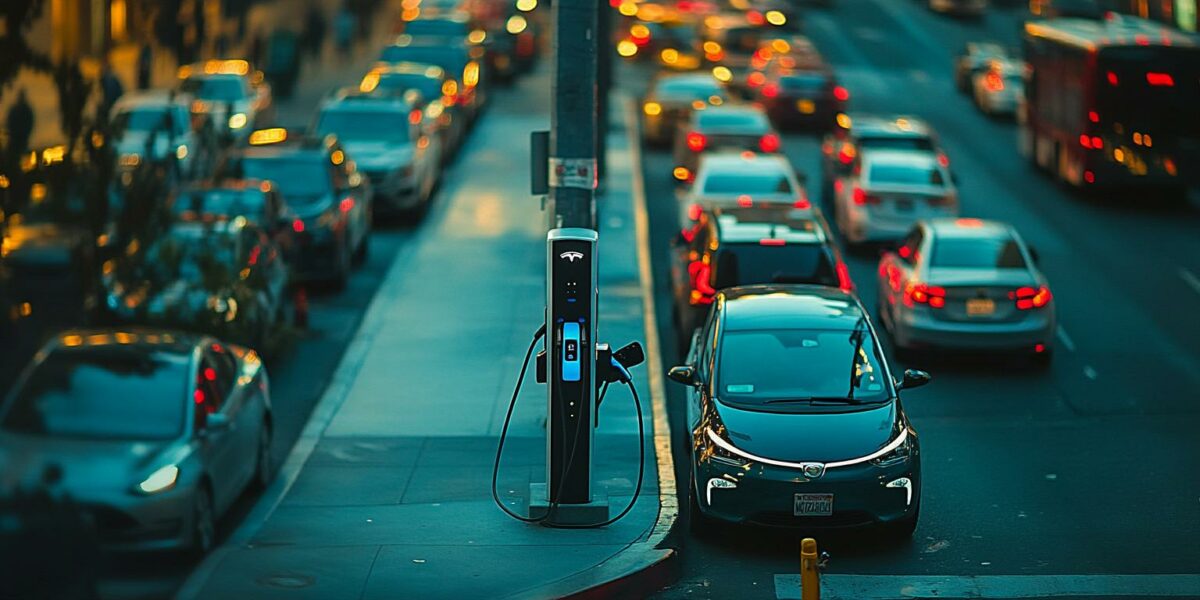The Urgent Need for EV Charging Stations
We need a dramatic acceleration in the installation of electric vehicle (EV) charging stations. Internal combustion engines are major culprits in greenhouse gas emissions, contributing to the planet’s alarming warming trends. Despite federal and state pushes, many motorists suffer from “range anxiety” due to the inadequate number of charging stations.
The construction of these critical infrastructures is unfortunately moving at a snail’s pace. Even with the Biden administration’s $7.5 billion secured under the Bipartisan Infrastructure Law, progress has been minimal. As of May, just eight stations had been installed, and another $521 million in grants was announced recently to hasten the process.
Jen Walling, executive director of the Illinois Environmental Council, remains hopeful but acknowledges the need for a rapid build-out of the infrastructure. “We need to rush the infrastructure,” she emphasized, highlighting the urgency of the situation.
In sum, while the government is making efforts, the pace of implementation leaves much to be desired. This slow progress hampers the transition to a cleaner, greener transportation system.
Challenges in EV Adoption
President Joe Biden’s ambitious target for EV sales aims for 50% by 2050, while Illinois sets a goal of 1 million EVs by 2030. Despite some progress driven by price cuts and government incentives, hurdles remain. Recent industry actions, such as Ford canceling a major EV project and GM delaying a factory opening, signal potential setbacks.
Even more concerning, J.D. Power adjusted its forecast, predicting that EV sales will hit only 36% by 2030, far below Biden’s goal. The current market is still dominated by early adopters, and wider acceptance hinges on a reliable network of charging stations.
Tesla has built an extensive network of nearly 30,000 fast-charging plugs in North America. However, these are mostly inaccessible to other EV owners due to software and hardware limitations. This exclusivity poses a significant barrier to broader EV adoption.
To make EVs more appealing to the masses, the government and industry must ensure the availability of public fast-charging stations. A robust charging infrastructure is essential to alleviate range anxiety and promote a shift to electric vehicles.
Current Infrastructure Shortcomings
The century-old network of gasoline stations sets a high benchmark for EV charging infrastructure. Unfortunately, the current pace of EV charger installation is far too slow. Motorists often find public stations broken or experience long wait times, especially at non-Tesla locations.
Many people lack private access to a charging station, making reliable public options crucial. The Federal Highway Administration reports that 1,000 chargers are added weekly, but reaching the goal of 500,000 charging ports nationwide remains a distant target.
For the nation to transition away from internal combustion engines, it is imperative to develop a comprehensive EV charging network. Continued reliance on gas-powered vehicles will only exacerbate climate change issues.
Here are some key points to consider:
- EV chargers must be widely accessible and functional.
- Public confidence in charging infrastructure needs boosting.
- Government and industry collaboration is vital for success.
The Path Forward
The transition to electric vehicles is a critical step in combating climate change. Despite the current slow pace, there is hope. Investments and initiatives are beginning to take shape, but they must be accelerated to meet environmental goals.
Installing a comprehensive network of EV charging stations is not just about convenience; it’s about securing a sustainable future. Faster implementation is necessary to keep up with the growing number of electric vehicles on the road.
Public and private sectors must work hand-in-hand to overcome existing barriers. The future of transportation depends on a reliable and extensive charging network.
Ultimately, the success of electric vehicles hinges not just on the cars themselves but on the infrastructure that supports them. It’s time to bridge the gap and ensure a greener, cleaner future for all.



abigail
This is hilarious and sad at the same time. Billions spent and nothing to show for it! 😂
lucas
Why isn’t the government pushing harder? We need those stations NOW!
Trinity0
Is Tesla doing anything to make their chargers available to other EVs?
tigger
Thank you for bringing this to light. We need more awareness on this issue!
hudsonhorizon
Can’t believe we’re lagging so much despite all that funding. 🙄
Josiah
Wow, only 8 stations so far? That’s really disappointing. What’s taking so long?